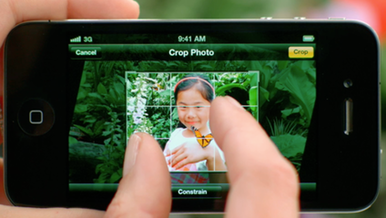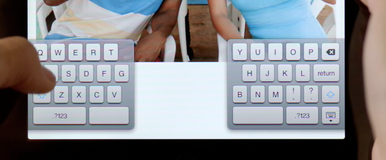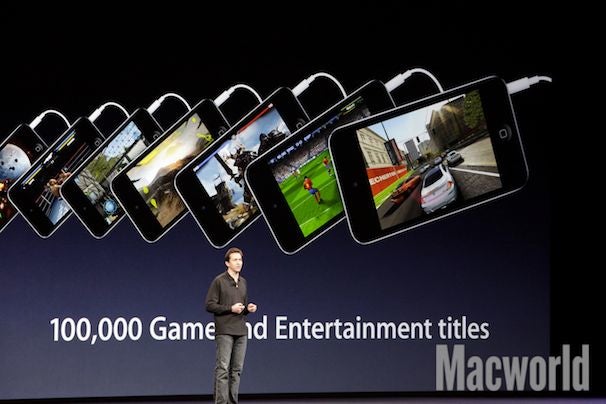At WWDC , Apple unveils iOS 5 !
Apple on Monday gave users their first glimpse at iOS 5, the next iteration of the company’s mobile operating system for iPhones, iPod touches, and iPads. During the keynote address at the Worldwide Developers Conference, Apple senior vice president Scott Forstall covered 10 new features out of the 200 planned for iOS 5. With iOS 5, Apple introduces a couple brand new apps, revamps many, rethinks notifications, and finally severs the cord between iOS and the Mac.
Developers get a copy of iOS 5 on Monday. The finished version is set to go out to consumers in the fall.
Notifications
Perhaps no new iOS 5 feature will be more welcome than its overhauled notifications system. The days of the modal, one-at-a-time pop-up alert are ending, and Forstall’s declaration that iOS 5 includes an upgrade brought an uproarious cheer from the developers in attendance. iOS 5 introduces something Apple calls Notification Center, a single place that combines all of your notifications. You can access Notification Center at any time with a single swipe down from the menu at the top of your device—a gesture which, it must be said, achieves the same effect already on Android phones. Notification Center then folds down, including missed calls, voicemails, text messages, push notifications, and even stock and weather updates. You can dismiss Notification Center and get back to your app, or quickly switch to a notifying app instead. You clear notifications out by tapping a small X.
The iOS lock screen now handles notifications better, too. You can swipe across notifications on the lock screen to go directly to the appropriate app. For example, Forstall swiped across a text message notification on his lock screen, which took him directly to that text in the Messages app.
PC Free
Forstall declared that folks want to buy iPhones and iPads without needing computers to tether them to. Starting with iOS 5, new iPhones will display a Welcome setup screen, allowing you to activate your device on the device itself. Software updates—as in, new iOS updates—are now over the air, too—no more iTunes syncing to get the latest incarnation of the operating system. You also no longer need to plug your iOS device into your computer to sync; with delta updates (which include only the minimal amount of changed code necessary) will make iOS app updates much smaller.
Forstall said that, as part of cutting the PC cord, Apple looked to eliminate those situations where folks go back to their computers instead of using their iOS devices. Various tasks—like adding and deleting Calendars, creating and deleting mailboxes, and the already-covered photo editing tools—are all introduced in iOS 5 to help eliminate the PC as an iOS requirement.
iMessage
As rumored in the run-up to the WWDC keynote, iOS 5 includes a new messaging app called iMessage. It sends texts, photos, videos, contacts, and allows for group messaging too. But it introduces new features like delivery receipts, read receipts, and indications when your contacts are typing back to you. Messages are delivered to all your iOS devices, and they work over both 3G and Wi-Fi—and they’re all encrypted, to boot.
It’s a new take on—and a replacement for—SMS, MMS, and even mobile instant messaging. Like the Blackberry Messenger service—which is limited to Blackberry users, iMessage will be limited to contacts using iOS devices. And, of course, iMessage uses the new notifications system.
Safari
Forstall said that Safari’s open-source Web engine powers 90 percent of mobile browsing. Among Safari’s new features is a feature called Reader. Like the similar functionality in the desktop version of Safari, Reader lets you get (and share) all the content of an article, removing navigation, ads, and other content—leaving only the text.

Also new is Reading List, which is a simple and convenient way to save a story for later reading. Items in your Reading List are shared with your Mac or PC version of Safari, too.
Tabbed Browsing makes its first appearance in the official Safari app in iOS 5, too. Tabs look much as you’d expect—that is, just like they do in Safari on the desktop. It appears that tabbed browsing is limited to the iPad at this time, likely due to space constraints on Apple’s smaller iOS devices.
Newsstand
Forstall said that “most of the major publishers of magazines and many newspapers” have signed up for App Store subscriptions already. Newsstand is a devoted app for accessing and downloading those periodicals. The app looks a lot like iBooks, only it focuses on magazines and newspapers instead. New issues that arrive overnight will download automatically.
According to Forstall, people send more than 1 billion tweets per week. New in iOS 5 is single sign-on support for Twitter; you configure your login details in the Settings app. Theoretically, then, third-party Twitter clients should be able to access your login details without requiring separate sign-in within their apps. Several of Apple’s own apps, like Camera Photos, Safari, YouTube, and Maps will all support direct Twitter integration, so that you can quickly post data from those apps to your Twitter account. You can even use Twitter to automatically update your contacts’ photos and Twitter usernames.
Reminders
Though the App Store is rife with reminder apps—or, perhaps, because it’s rife with such apps—Apple is introducing a new Reminders app with iOS 5. The app supports multiple lists, and to-dos can be both date- and location-stamped. Those locations are particularly powerful—your device can remind you about a task when you reach a specific location, or depart from one. Reminders are also searchable, and will sync with iCal on the Mac and Outlook on Windows.
Camera
iPhone 4’s camera is the second-most popular camera on Flickr, and the most popular phone camera, Forstall said. iOS 5 makes it faster to take photos from the lock screen by reimplementing a shortcut that predates iOS 4: Double-tap the Home button from that lock screen to quickly launch theCamera app. And, in a shocking turnaround, you can now use the volume buttons on the phone to take photos, instead of the on-screen shutter button. (Apple previously rejected apps that implemented such feature.)







0 comments:
Post a Comment